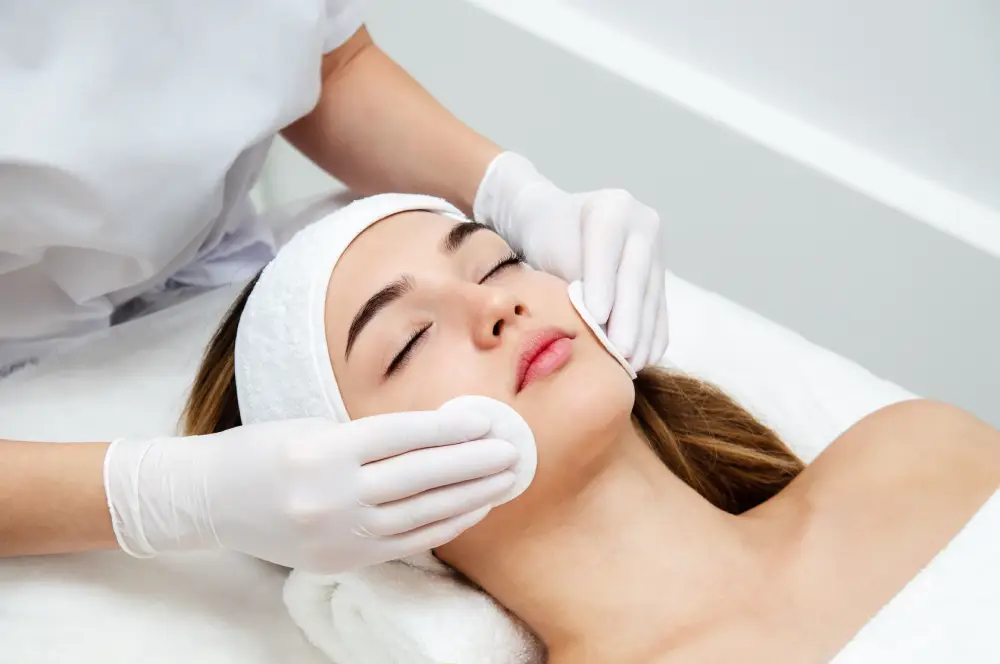Can Estheticians Do Dermaplaning In Texas?

In Texas, the beauty industry offers a wide array of not only holistic skincare, but also advanced skincare treatments, one of which is dermaplaning. This non-invasive treatment is popular for its effectiveness in exfoliating the skin and removing peach fuzz, enhancing facial radiance. However, can estheticians do dermaplaning in Texas? Let us explore the regulatory standards and training necessary for estheticians to offer this service in the Lone Star State.
Understanding Dermaplaning
Dermaplaning involves using a sterile, surgical scalpel to gently scrape off the top layer of dead skin cells and fine vellus hair. The technique results in smoother, more radiant skin and can be compared to other exfoliation techniques like microdermabrasion. Unlike more aggressive procedures, dermaplaning offers immediate improvement in skin texture and tone without the use of harsh chemicals.
Can Estheticians Do Dermaplaning in Texas?
In Texas, licensed estheticians are allowed to perform dermaplaning because it is classified as a cosmetic procedure rather than a medical one. This classification implies that the procedure does not significantly alter the skin’s structure and is considered safe when performed by a trained professional.
Licensing and Training Requirements
To perform dermaplaning, estheticians in Texas must hold a valid state license. This license ensures that they have completed the necessary education and training in skin care, anatomy, and proper sanitation practices. Furthermore, while a general esthetician’s license is required, additional specialized training in dermaplaning is highly recommended to ensure the highest standards of safety and effectiveness.
Additional Specialized Training
Specialized training programs for dermaplaning can vary in length but typically cover the proper handling of tools, techniques for effective and safe exfoliation, and strategies for customizing the treatment to individual skin types. This training is crucial for estheticians to master in order to safely conduct the procedure and manage any potential skin reactions or complications.
Safety and Efficacy
Safety is a paramount concern when performing any skin treatment. Estheticians must adhere to stringent hygiene and safety protocols to prevent any risks associated with dermaplaning. This includes using sterile equipment, maintaining a clean working environment, and employing proper techniques to avoid cuts and abrasions.
Complementary Treatments
In addition to dermaplaning, estheticians might suggest complementary treatments to enhance the skin’s appearance and health. Treatments such as 24k gold therapy and galvanic treatments can provide additional benefits like improved skin hydration and firmness, making them excellent complements to dermaplaning.
Client Care and Consultation
Before performing dermaplaning, it is critical for estheticians to conduct a thorough client consultation. This step is essential to assess the client’s skin type, discuss their skincare goals, and identify any potential contraindications such as active acne, sensitive skin, or allergies.
A comprehensive consultation ensures that dermaplaning is appropriate for the client and helps tailor the treatment to their specific needs, maximizing the benefits while minimizing the risk of adverse reactions. This personalized approach underpins the quality and safety of the skin care services provided.
In Texas, estheticians are indeed permitted to perform dermaplaning provided they have the appropriate training and hold a valid license. Spa Réveil’s skilled estheticians are trained to offer dermaplaning safely and effectively, ensuring that clients can enjoy the full benefits of this popular skincare treatment. If you are considering dermaplaning or any other skin-enhancing treatments, we are here to provide expert care and guidance, helping you achieve the radiant, healthy skin you desire.

Address11410 Century Oaks Terrace | Suite 140 | Austin, Texas 78758 View Map (on Esperanza Crossing across from Zara)
Join Our Mailing List
Receive exciting offers and updates from Spa Réveil.
